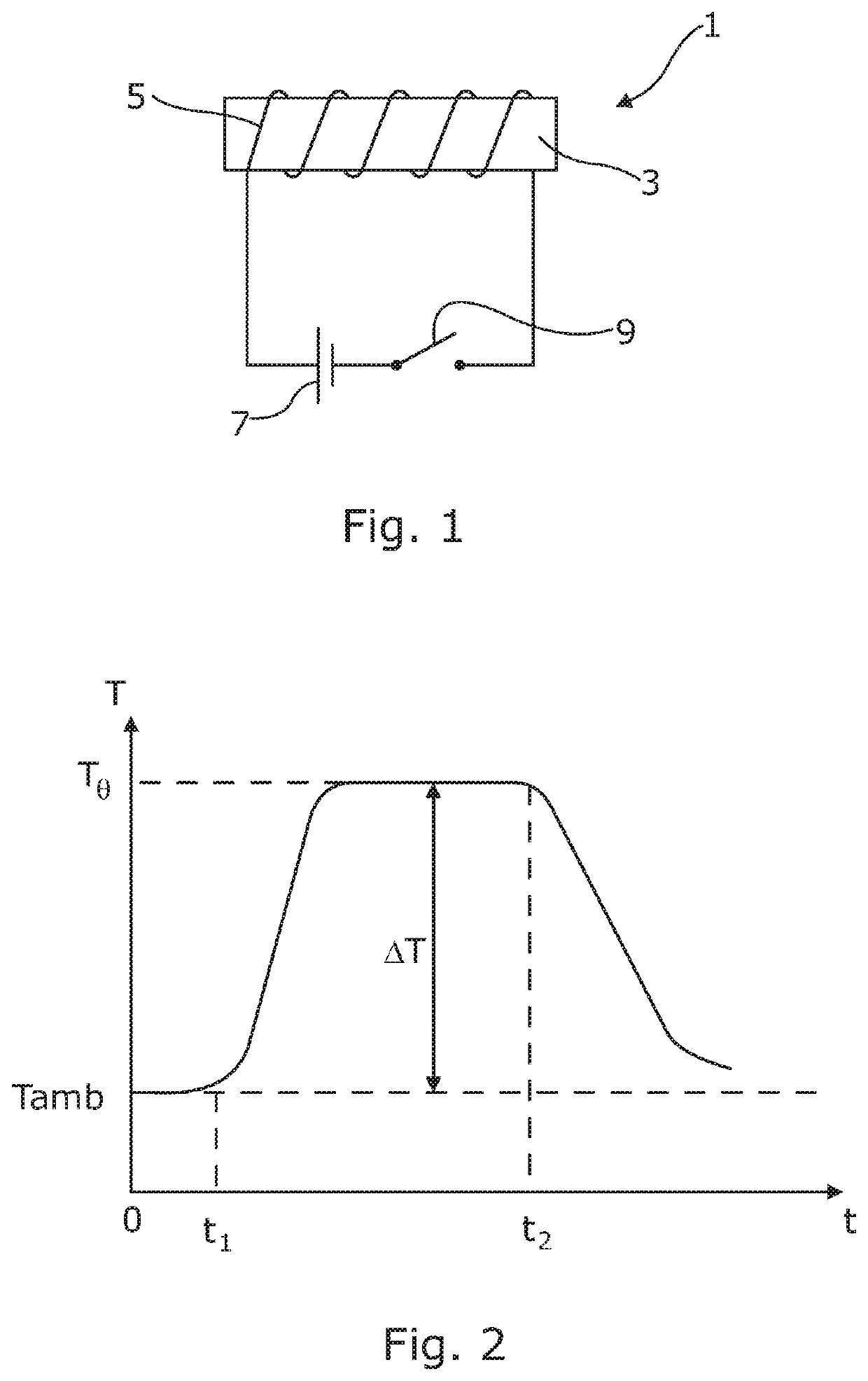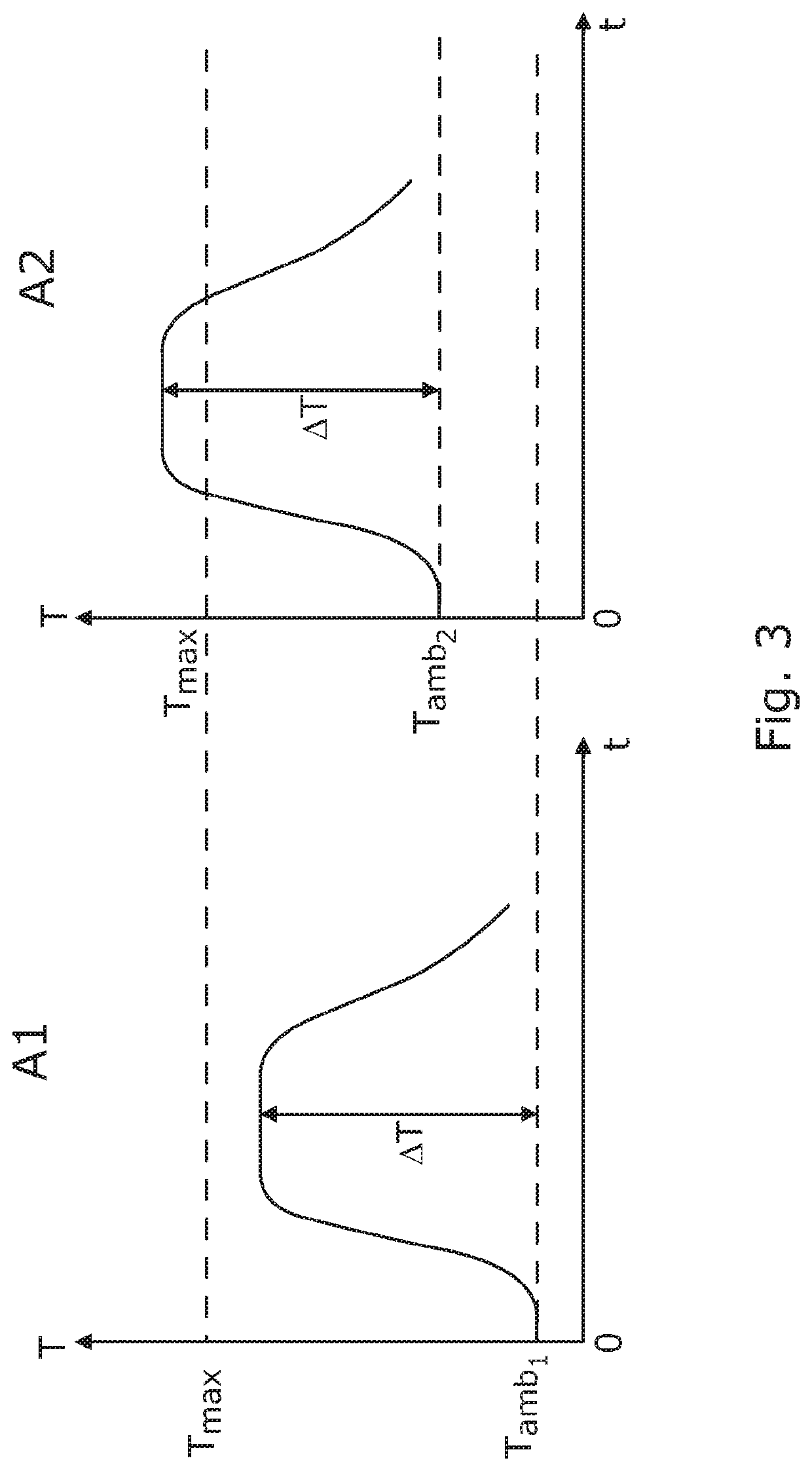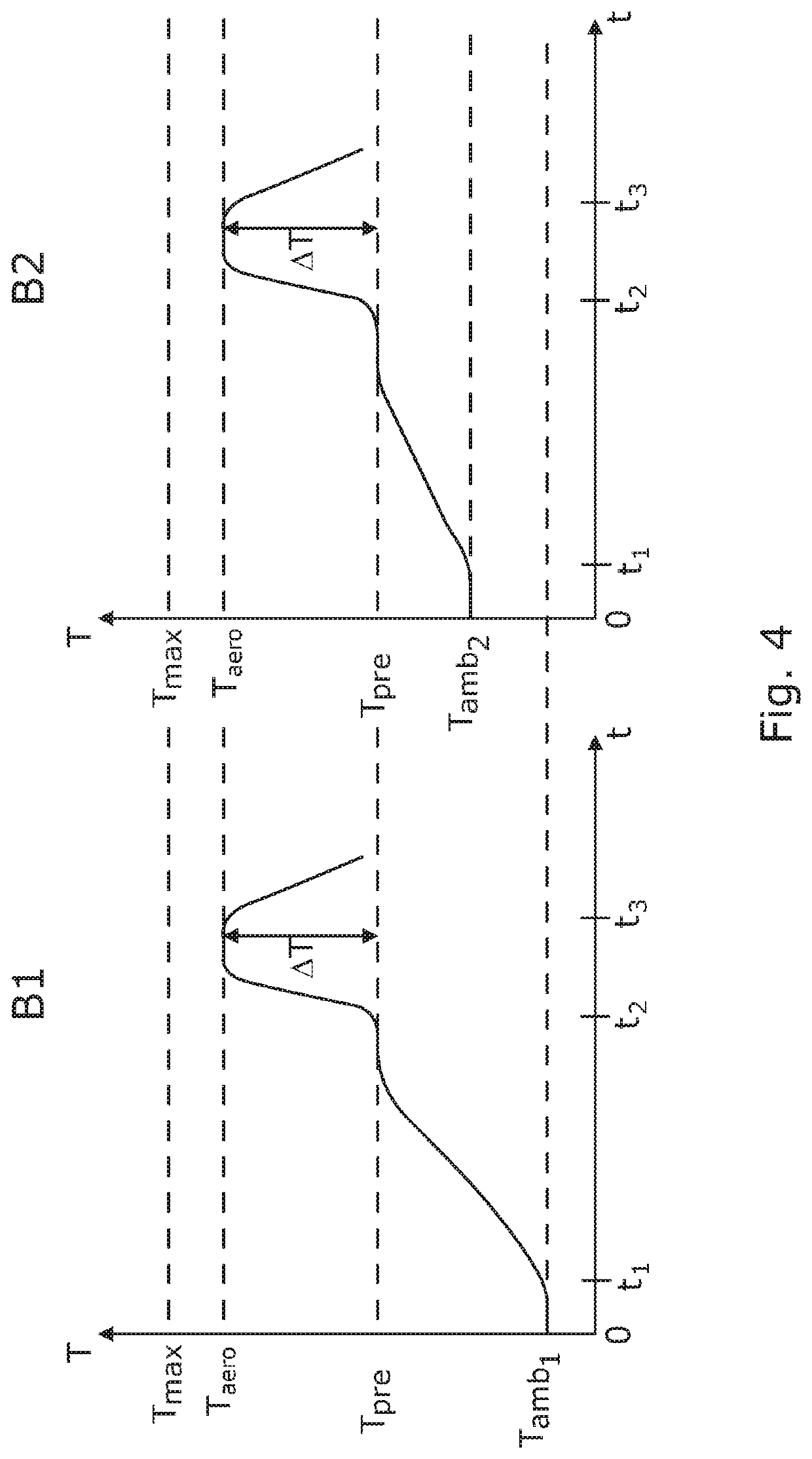Methods, Inhalation Device, and Computer Program
a technology of which is applied in the field of methods, inhalation device and computer program, can solve the problems of simply setting pre-heating power (wattage) and time constraints, unsatisfactory heating of heating elements, and course unacceptable and possibly dangerous, and achieve accurate control, slow activation, and incomplete and/or highly variable aerosolisations.
- Summary
- Abstract
- Description
- Claims
- Application Information
AI Technical Summary
Benefits of technology
Problems solved by technology
Method used
Image
Examples
Embodiment Construction
[0082]FIG. 4 shows a comparison of two separate heating profiles B1 and B2 for a heater of an inhalation device, which profiles are produced by a method according to the present invention. The heater is arranged to heat an aerosolisable composition. Each heating profile starts from a different ambient temperature Tamb1 and Tamb2 and are not drawn to scale.
[0083]In both heating profiles B1 and B2, a heater is initially heated to a first temperature or preconditioning temperature Tpre. The preconditioning temperature Tpre is the same in both heating profiles regardless of the starting ambient temperatures and may typically be in the range 5° C. to 45° C. higher than the ambient temperature, depending of course on ambient temperature norms for the particle climate, country or region in which the device is to be used. The preconditioning temperature Tpre is preferably one of the ranges 25° C. to 90° C., 35° C. to 80° C., 45° C. to 70° C.
[0084]The heater starts heating, notably relativel...
PUM
 Login to View More
Login to View More Abstract
Description
Claims
Application Information
 Login to View More
Login to View More - R&D
- Intellectual Property
- Life Sciences
- Materials
- Tech Scout
- Unparalleled Data Quality
- Higher Quality Content
- 60% Fewer Hallucinations
Browse by: Latest US Patents, China's latest patents, Technical Efficacy Thesaurus, Application Domain, Technology Topic, Popular Technical Reports.
© 2025 PatSnap. All rights reserved.Legal|Privacy policy|Modern Slavery Act Transparency Statement|Sitemap|About US| Contact US: help@patsnap.com



